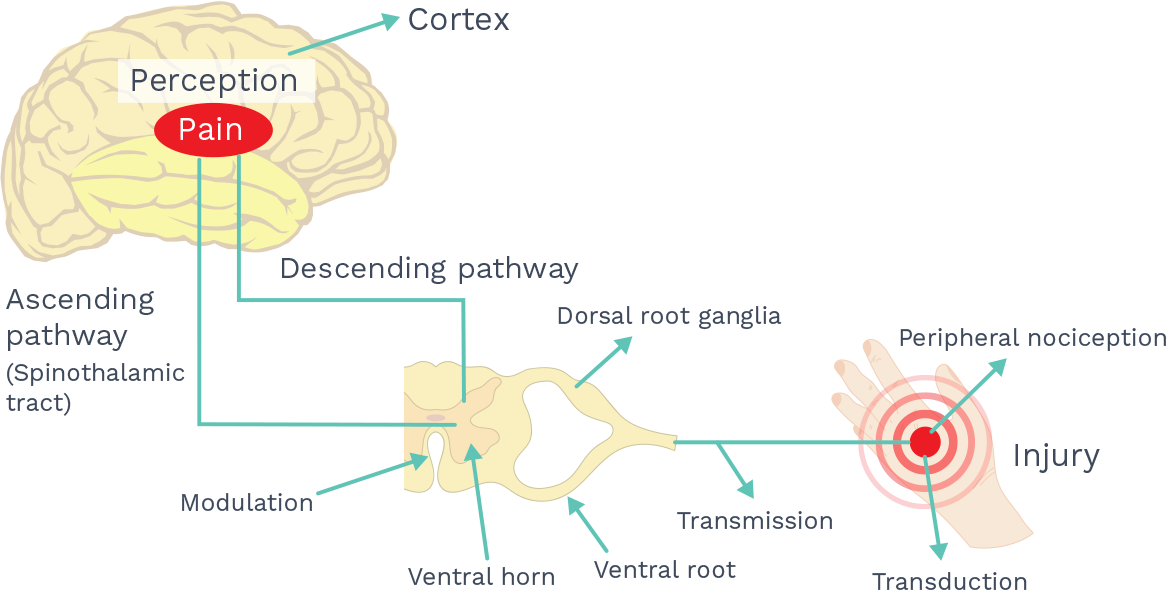Nociception is the neural process of encoding noxious stimuli, whereas pain is defined as an unpleasant sensory and emotional experience associated with actual or potential tissue damage, or described in terms of such damage.
Nociceptive pain is a direct result of an injury, such as trauma, disc compression, carpal tunnel, or a tumor.
Nociceptive pain can be further divided into two types of pain – somatic and visceral. An example of somatic nociceptive pain is arthritis, which affects 25 to 40% of patients over 40 years old suffering from pain and burns. Visceral nociceptive pain is common in those suffering from conditions such as ulcers and/or gastritis.
Figure 1 demonstrates how nociceptive pain takes place and how pain signals travel to the human brain.

Figure 1 adopted from: Grubb S., Pasvankas G.W. (2019) Anatomy and Physiology: Mechanisms of Nociceptive Transmission. In: Khelemsky Y., Malhotra A., Gritsenko K. (eds) Academic Pain Medicine. Springer, Cham. https://doi.org/10.1007/978-3-030-18005-8_1